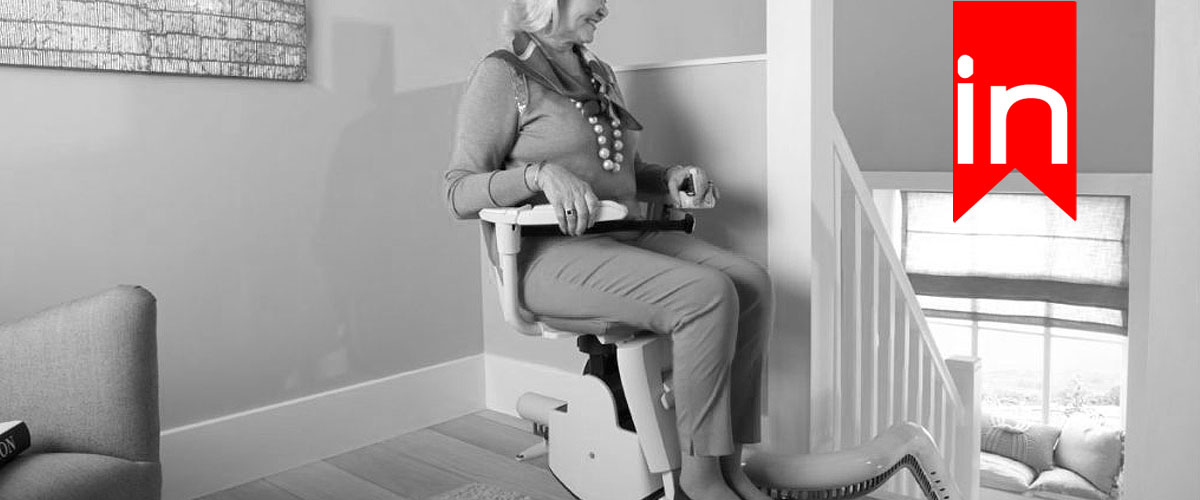The Home Accessibility Tax Credit (HATC) is a non-refundable tax credit designed to assist seniors and persons with disabilities in making their homes safer and more accessible. This tax credit aims to reduce the financial burden associated with renovations that improve the safety, functionality, and mobility of homeowners and their families. By making essential modifications more affordable, the HATC enables individuals with mobility or other limitations to maintain their independence and continue aging in place.
Understanding the HATC eligibility requirements is crucial for homeowners seeking to take advantage of the credit. The tax credit is generally available to seniors aged 65 or older, as well as individuals who qualify as disabled according to the Canadian government. Additionally, for a renovation to be eligible for the HATC, it must be of an enduring nature, integral to the dwelling and improve the accessibility or functionality of the home for the individuals residing in it. With the right information and guidance, seniors and caregivers can make informed decisions about home accessibility projects and maximize their tax savings.
Highlights
- The Home Accessibility Tax Credit helps seniors and persons with disabilities finance home renovations for improved safety and accessibility.
- Eligibility for the HATC includes seniors aged 65 or older and individuals who qualify as disabled as per Canadian government guidelines.
- Choosing the right renovation projects is crucial to maximizing tax credit benefits and ensuring a safer, more accessible living environment.
Know The Home Accessibility Tax Credit
The Home Accessibility Tax Credit (HATC) is a non-refundable tax credit available to Canadians who aim to make their homes more accessible for seniors or people eligible for the Disability Tax Credit. This tax credit’s primary purpose is to assist individuals in covering the costs of permanent home modifications designed to improve accessibility and safety.
The HATC provides financial assistance for eligible homeowners by allowing them to claim a portion of the expenses incurred on home renovations or alterations. These changes should significantly contribute to the overall quality of life for seniors and people with disabilities living in the home. The range of renovations can include ramps, grab bars, walk-in tubs, and other accessibility improvements.
Eligibility Criteria
To be eligible for the Home Accessibility Tax Credit, certain criteria must be met by the individual taxpayers. The following outlines the main requirements for HATC eligibility:
- The individual must be a homeowner or have a family member living with them who is either:
- A senior (aged 65 or older)
- Eligible for the Disability Tax Credit
- The home renovations must be permanent and directly improve the home’s accessibility or help reduce the risk of harm.
- The renovations should be completed within the tax year for which the credit is being claimed.
- Proper documentation, including invoices and receipts, must be kept to substantiate the expenses.
The HATC allows eligible individuals to claim up to $10,000 in renovation expenses, resulting in a maximum tax credit of $1,500 (15% of the eligible expenses). This tax credit can greatly help seniors and individuals who qualify for the Disability Tax Credit in making their homes safer and more accessible, ensuring they can live comfortably and independently in their own space
Eligibility Requirements
To be eligible for the Home Accessibility Tax Credit (HATC) in Canada, an individual must meet certain criteria. A qualifying individual is either a person who is 65 years of age or older or a person who is eligible for the Disability Tax Credit. Additionally, the credit may also be claimed by a spouse or common-law partner who supports the qualifying individual, or it can be claimed by a caregiver who provides in-home support to the qualifying individual.
Eligible Dwellings
An eligible dwelling refers to the primary residence of the qualifying individual. This dwelling can be a single-unit residence such as a house, condo, or mobile home, or it can be part of a multi-unit residence such as an apartment or townhouse. To qualify for HATC, the dwelling must be owned by the individual, their spouse or common-law partner, or a caregiver who supports the individual.
Qualifying Renovations
Qualifying renovations are improvements made to an eligible dwelling with the main goal of accessibility and mobility for the qualifying individual. These renovations should allow the individual to maintain their independence, reduce the risk of harm, and improve their overall quality of life. Some examples of qualifying renovations include:
- Installing non-slip flooring
- Adding grab bars in the bathroom
- Installing wheelchair ramps or stairlifts
- Widening doorways and hallways for wheelchair accessibility
- Modifying countertops and cabinets for easier use
It is important to note that for a renovation to qualify, it must be of an enduring nature and integral to the dwelling. Regular maintenance or repairs that do not directly enhance accessibility for the qualifying individual are not eligible for the HATC.
Maximizing Your Tax Credit
Home accessibility tax credit is designed to help seniors and those who are eligible with the costs of making their homes more accessible and safer. In this section, we will discuss how to claim and calculate the credit, as well as the relevant entities to consider throughout the process.
Claiming the Credit on Tax Returns
To maximize your tax credit, it is essential to properly claim it on your Canadian tax returns. The Canada Revenue Agency (CRA) allows eligible individuals to claim a non-refundable tax credit for the tax year in which qualifying home renovations or improvements were completed.
Firstly, ensure that you meet all the eligibility criteria. If you are eligible, you can use line 31285 on your income tax and benefit return to claim the credit. In addition, you will need to complete and submit Schedule 12 along with your tax return to provide details about the accessibility expenses incurred during the tax year.
Calculating The Credit Amount
Calculating the credit amount is an important aspect of maximizing your tax credit. The home accessibility tax credit is equal to 15% of the total eligible expenses, up to a maximum of $10,000 in a tax year.
For example, if you spent $8,000 on eligible home accessibility improvements in a particular tax year, your credit would be calculated as follows:
Eligible expenses: $8,000
Tax credit rate: 15%
Total credit amount: $8,000 x 15% = $1,200
Claiming The Credit
The Home Accessibility Tax Credit (HATC) is a valuable financial aid for seniors and individuals with disabilities who require modifications to their homes to improve accessibility. In this section, we will discuss the process and requirements for claiming this tax credit, highlighting the required documentation and claim submission process.
Required Documentation
Before claiming the HATC, it’s essential to gather all necessary supporting documents to validate the claim. Here are the documents you should prepare:
- Receipts: Keep all original receipts for eligible expenses incurred. These receipts must clearly indicate the GST/HST paid along with the GST/HST number of the service provider.
- Supporting Documents: Depending on your claim, you may also need to submit additional documents such as plans, invoices, permits, or contracts that provide evidence of the expenses associated with the accessibility improvements.
Note: It is not necessary to submit these documents to the Canada Revenue Agency (CRA) with the tax return, but they must be available if requested by the CRA for review.
Claim Submission Process
To claim the HATC, follow these steps:
- Eligibility: Ensure that the applicant is eligible, meaning they must be a senior (65 years or older) or an individual with a disability, or a family member living with such an individual.
- Determine Eligible Expenses: Review the expenses incurred to identify which of them qualify for the HATC. Eligible expenses include permanent renovations or alterations to improve accessibility, such as widening doorways or installing access ramps.
- Calculate the Credit: Calculate the tax credit based on 15% of the total eligible expenses up to a maximum of $10,000 per calendar year per dwelling.
- Submit the Claim: Report the eligible expenses on the applicant’s income tax return using Schedule 12, and claim the HATC on line 398 of the tax return.
Types Of Renovations And Expenses
When it comes to making homes more accessible for seniors, there are a variety of renovations and expenses to consider. It’s essential to understand which costs are eligible for the Home Accessibility Tax Credit (HATC) and which are not, in order to maximize the benefits available.
Eligible Renovation Costs
For seniors, there are several types of home modifications that can be both beneficial and covered by the HATC. Eligible expenses include, but are not limited to, the following improvements:
- Wheelchair ramps: Ramps provide easier and safer access for individuals using wheelchairs or walkers.
- Grab bars: Installing grab bars in key areas, such as the bathroom, can provide stability and support for seniors performing daily tasks.
- Accessible showers: Walk-in or roll-in showers with benches can greatly improve safety and ease of use for seniors with limited mobility.
- Labour, materials, and permits: Expenses for the labour and materials required to complete eligible renovations, as well as the cost of necessary building plans and permits, can be included in the HATC claims.
It’s important to note that only renovations that are of an enduring nature and integral to the dwelling qualify for the HATC. In addition, seniors may be able to claim some of these expenses as medical expenses in certain cases, providing further financial assistance.
Ineligible Costs
While the HATC covers many renovations that can improve a senior’s quality of life, there are some expenses that are deemed ineligible. These could include, but are not limited to:
- Routine maintenance or repairs, such as painting or appliance replacements
- Temporary solutions, such as portable ramps or equipment not permanently affixed to the home
- Luxury items, like a hot tub or home theatre system
- Expenses for services, such as housekeeping or landscaping
Improving Accessibility and Safety
The Home Accessibility Tax Credit (HATC) is of great importance to seniors and their caregivers, as it focuses on enhancing home accessibility and safety measures. For elderly individuals with limited mobility or disabilities, the HATC offers financial assistance to make necessary modifications to their homes. These adjustments may include installing wheel-in showers and handrails to improve daily living. Moreover, the HATC reduces the financial burden on caregivers, who often provide support for seniors with accessibility needs.
The HATC ensures seniors can continue living in a safe and accessible environment. By investing in home modifications, the risk of accidents such as falls or other mobility-related issues decreases significantly.
Supporting Aging In Place
A primary goal of the HATC is to support aging in place, allowing seniors to maintain independence by remaining in their homes as long as possible. By offering adequate financial support through the tax credit system, elderly individuals are provided with greater flexibility in their housing and care options.
The HATC not only benefits individual seniors but also alleviates the stress and responsibilities of caregivers. Since it enables seniors to remain in their own homes and communities, caregivers may see a reduction in the need for frequent visits, hands-on support, and preparation for a transition to a seniors’ facility.
Connecting With Professionals
When seeking to take advantage of the Home Accessibility Tax Credit (HATC), it’s crucial to connect with professionals who can guide you through the process. One of the first steps is to hire a qualified contractor who has experience with home modifications for seniors. Ensure the contractor you choose is registered, has a valid GST/HST registration number, and is well-versed in Canadian regulations.
There are many modifications that can be made to a housing unit to improve accessibility for seniors, which may be eligible for the HATC. Examples of such modifications include:
- Installing grab bars and handrails
- Widening doorways and hallways
- Adding non-slip flooring
- Installing wheelchair ramps
To find a reputable contractor, consider asking for recommendations from friends or family, contacting local homebuilders’ associations, or researching online reviews.
Ensuring Compliance
When conducting home renovations to accommodate seniors, it’s important to follow Canada-specific regulations and guidelines to ensure compliance. Compliance will not only uphold safety standards and the quality of work but will also determine eligibility for the Home Accessibility Tax Credit. All eligible expenses should fall within the scope of making the housing unit more accessible, safe, and functional for seniors.
Consult with the hired professional to verify that the work being done complies with relevant Canadian Building Codes. Review the project plan and have the qualified contractor discuss the details of any eligible expenses and modifications. This ensures that both parties remain on the same page throughout the renovation process and improves the likelihood that the modifications will qualify for the HATC.
Additional Tax Considerations
In this section, we will discuss additional tax considerations relevant to the Home Accessibility Tax Credit for seniors, which can be combined with other credits and deductions and have an impact on rental income.
Combining With Other Credits And Deductions
The Home Accessibility Tax Credit can be used in conjunction with other tax credits and deductions, such as the Medical Expense Tax Credit (METC), to help seniors save more on taxes. The METC allows taxpayers to claim expenses related to medical care, including certain home improvements that improve accessibility for seniors. Additionally, those who provide care for an elderly relative may be eligible to claim the Eligible Dependant tax credit, which can help offset the costs of caregiving.
It’s essential to consider the various tax credits and deductions available when filing taxes, as combining them can lead to more significant savings for seniors and their caregivers. Here are some tax credits and deductions that can be combined with the Home Accessibility Tax Credit:
- Medical Expense Tax Credit
- Eligible Dependant tax credit
- Disability tax credit
- Caregiver credit
However, keep in mind that certain restrictions and eligibility requirements apply to these credits and deductions, so it’s crucial to carefully review and consult with a tax professional if needed.
Impact On Rental Income
For seniors who own property and receive rental income, the Home Accessibility Tax Credit can also impact their tax situation. As the credit is allowed for expenses incurred to improve the accessibility of the senior’s principal residence, it may not be applicable for expenses related to rental properties, even if the property is occupied by a senior.
In some cases, however, seniors and their common-law partners may be eligible for the Home Accessibility Tax Credit when they reside in the rental property together. If the rental property is used for both personal and rental purposes, it would be essential to prorate the expenses between personal and rental use for tax purposes.
Seniors Should Take Advantage Of The Home Accessibility Tax Credit
The Home Accessibility Tax Credit in Canada is a valuable financial incentive for seniors and persons with disabilities, offering a non-refundable tax credit for making their homes more accessible and safer. By covering 15% of up to $10,000 in eligible renovation expenses, it significantly reduces the financial burden associated with modifying homes to meet changing mobility and health needs. Seniors should take advantage of this credit to enhance their quality of life, maintain independence, and potentially increase the value of their property. It represents a proactive investment in their well-being and long-term comfort in their own homes.


